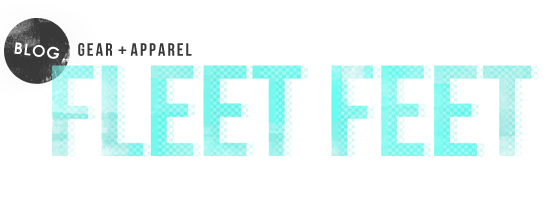 |
| So many shoes, so many options--and only one Fit Process. |
Even seasoned runners can ensure they’re in the right shoe.
Up until about four years ago, I was running roughly a marathon a year, with a
couple of half marathons and 10k’s thrown in there for good measure. While my
body always felt fit, my knees down felt otherwise. Countless toenails turned
black, died, and flaked off. It was a guessing game when my calves would cramp
up and give out. And my feet were constantly sore.
I thought about limping into Fleet Feet to see what all of the
hubbub around Fleet Feet’s Fit Process was all about, but my ego said, “Nope, it’s just a by-product of the
training and thousands of miles.” Mercifully, my body vetoed my ego, and I checked
it out.
I disclosed my tales of woe and agony, and after the Fit Process
was done with me, I realized I’d been running in shoes that were a half-size
too small. Since then, no more cramped toes, dead toenails, or calf pain.
So, what exactly is the Fit Process? Like the name suggests,
it’s a process.
The What: “We
first have the person sit with their bare feet on the ground, then they stand,”
said Matt, the current Sales Lead at Fleet Feet Chico. “We’re looking at their
feet for arch movement.”
The Why: Too much
arch movement will de-stabilize other parts of the body, beginning with the
foot and moving on up through the ankles, knees and so on. Not good.
The What: “Next,
we might have the person do a standing squat, to see how tight the calves are,”
Matt said.
The Why: Calves
that are too tight will cause the heel to move up and down in the shoe. This provides
feedback as to whether the customer should spend more time stretching their
calves. They can also use a lacing technique to cinch in and secure the heel a
little more.
 |
| We perform a gait analysis as part of the Fit Process |
The What: “We’ll
then watch them walk from the side for a lateral view of what’s going on with
the ankle and arch,” said Matt. “Usually, it’s to reinforce what we saw when
the customer was sitting and standing. Then, we’ll watch them walk away from us
and back towards us.”
The Why: During
the gait analysis, we check to see if the heel rotates in or out as it strikes.
Is it coming through the center? What’s going on with the foot as it’s going
through the gait? How do they toe off? As they walk back towards us, we watch the
knees and how the toes are coming off the front, and if there’s any instability
there.
Additionally, based on the above, we can also determine whether
the customer could benefit from insoles, a shoe that has a specific type of
support system built into it, or possibly a combination of the two.
The Fit Process typically lasts about 25 to 45 minutes. Our
sales team has it down to a science, and they’re extremely patient and
knowledgeable. Our thought is that every runner could benefit from a gait analysis,
if only to confirm you’re wearing the right shoe. If you have any doubt that you
might be, we invite you to visit, and we’ll make sure you’re in the right shoe,
if you’re not already.
Because, really, toes are better off with all of their nails.

No comments:
Post a Comment